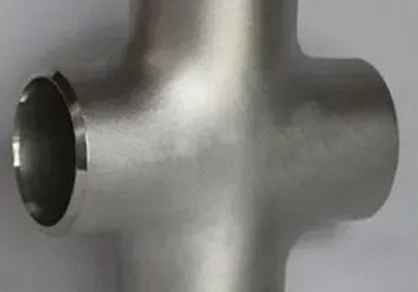-
Cangzhou Yulong Steel Co., Ltd.
-
Phone:
+86 13303177267 -
Email:
admin@ylsteelfittings.com
- English
- Arabic
- Italian
- Spanish
- Portuguese
- German
- kazakh
- Persian
- Greek
- French
- Russian
- Polish
- Thai
- Indonesian
- Vietnamese
- Zulu
- Korean
- Uzbek
- Hindi
- Serbian
- Malay
- Ukrainian
- Gujarati
- Haitian Creole
- hausa
- hawaiian
- Hebrew
- Miao
- Hungarian
- Icelandic
- igbo
- irish
- Japanese
- Javanese
- Kannada
- Khmer
- Rwandese
- Afrikaans
- Albanian
- Amharic
- Armenian
- Azerbaijani
- Basque
- Belarusian
- Bengali
- Bosnian
- Bulgarian
- Catalan
- Cebuano
- China
- China (Taiwan)
- Corsican
- Croatian
- Czech
- Danish
- Esperanto
- Estonian
- Finnish
- Frisian
- Galician
- Georgian
- Kurdish
- Kyrgyz
- Lao
- Latin
- Latvian
- Lithuanian
- Luxembourgish
- Macedonian
- Malgashi
- Malayalam
- Maltese
- Maori
- Marathi
- Mongolian
- Myanmar
- Nepali
- Norwegian
- Norwegian
- Occitan
- Pashto
- Dutch
- Punjabi
- Romanian
- Samoan
- Scottish Gaelic
- Sesotho
- Shona
- Sindhi
- Sinhala
- Slovak
- Slovenian
- Somali
- Sundanese
- Swahili
- Swedish
- Tagalog
- Tajik
- Tamil
- Tatar
- Telugu
- Turkish
- Turkmen
- Urdu
- Uighur
- Welsh
- Bantu
- Yiddish
- Yoruba

Nov . 17, 2024 20:44 Back to list
Techniques for Bending Tubular Steel Methods and Applications in Construction Projects
Understanding the Bending of Tubular Steel
Tubular steel, a versatile structural material, plays an essential role in various engineering applications, from bridges to skyscrapers. Its unique shape and strength make it particularly suitable for bending processes, which are critical in creating curved forms necessary for modern architecture and infrastructure. This article delves into the fundamentals of bending tubular steel, its benefits, challenges, and applications.
Bending tubular steel involves applying force to a steel tube until it adopts a desired arc or angle. This process can be performed using various techniques, including rotary draw bending and pipe bending, each suited for different applications. An important factor in this process is the material's yield strength, which determines how much bending the steel can endure before it risks permanent deformation or failure.
One of the primary benefits of bending tubular steel is its ability to maintain strength while reducing weight. Unlike traditional solid beams, tubular shapes provide a superior strength-to-weight ratio, allowing designers to create lighter structures without sacrificing stability. Additionally, the hollow nature of tubular steel aids in reducing material costs and enhancing the versatility of designs by allowing for more complex geometries.
bending tubular steel

However, bending tubular steel also presents challenges. One of the most significant concerns is wall thinning, which can occur during the bending process. Wall thinning compromises the strength of the steel and can lead to structural failure if not properly managed. Therefore, engineers must carefully calculate the dimensions and tolerances required for each project. Utilizing advanced software for simulation and modeling can help predict potential issues and optimize the bending process.
Furthermore, the conditions under which the bending occurs can significantly influence the outcome. Factors such as temperature and the bending radius must be monitored closely. Preheating the steel can improve its ductility, making it more amenable to bending without cracking. Conversely, bending too tightly without proper technique can introduce unwanted stresses and lead to failure.
In terms of applications, the bending of tubular steel is widely used in constructing modern infrastructures such as bridges, tunnels, and architectural features like railings and frames. Decorative elements, too, benefit from the aesthetic appeal of bent tubular constructions.
In conclusion, bending tubular steel is a crucial aspect of modern engineering and architecture. By understanding the techniques and challenges associated with this process, professionals can leverage its advantages to create innovative and enduring structures that meet both functional and aesthetic requirements. With the continued advancement of technology, the future of tubular steel bending looks promising, paving the way for even more ambitious projects.
Latest news
-
ANSI 150P SS304 SO FLANGE
NewsFeb.14,2025
-
ASTM A333GR6 STEEL PIPE
NewsJan.20,2025
-
ANSI B16.5 WELDING NECK FLANGE
NewsJan.15,2026
-
ANSI B16.5 SLIP-ON FLANGE
NewsApr.19,2024
-
SABS 1123 FLANGE
NewsJan.15,2025
-
DIN86044 PLATE FLANGE
NewsApr.19,2024
-
DIN2527 BLIND FLANGE
NewsApr.12,2024
-
JIS B2311 Butt-Welding Fittings LR/SR 45°/90° /180°Seamless/Weld
NewsApr.23,2024











